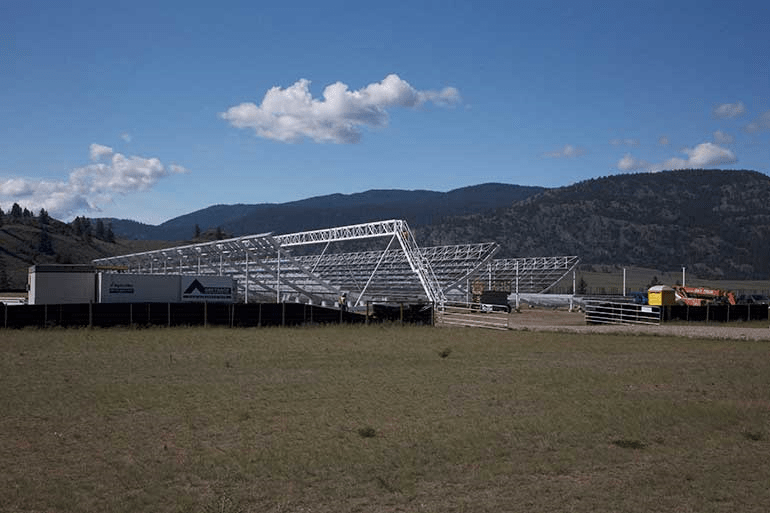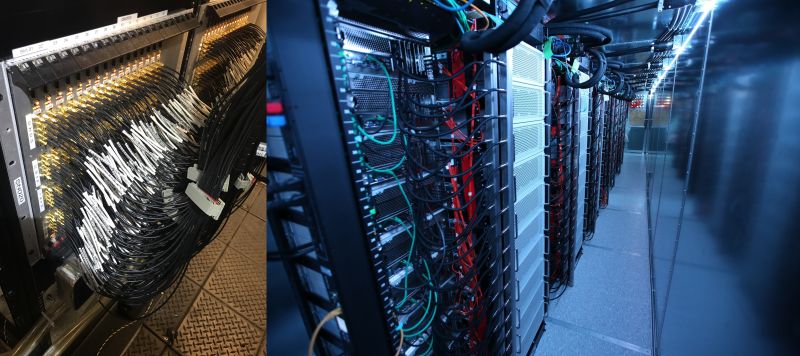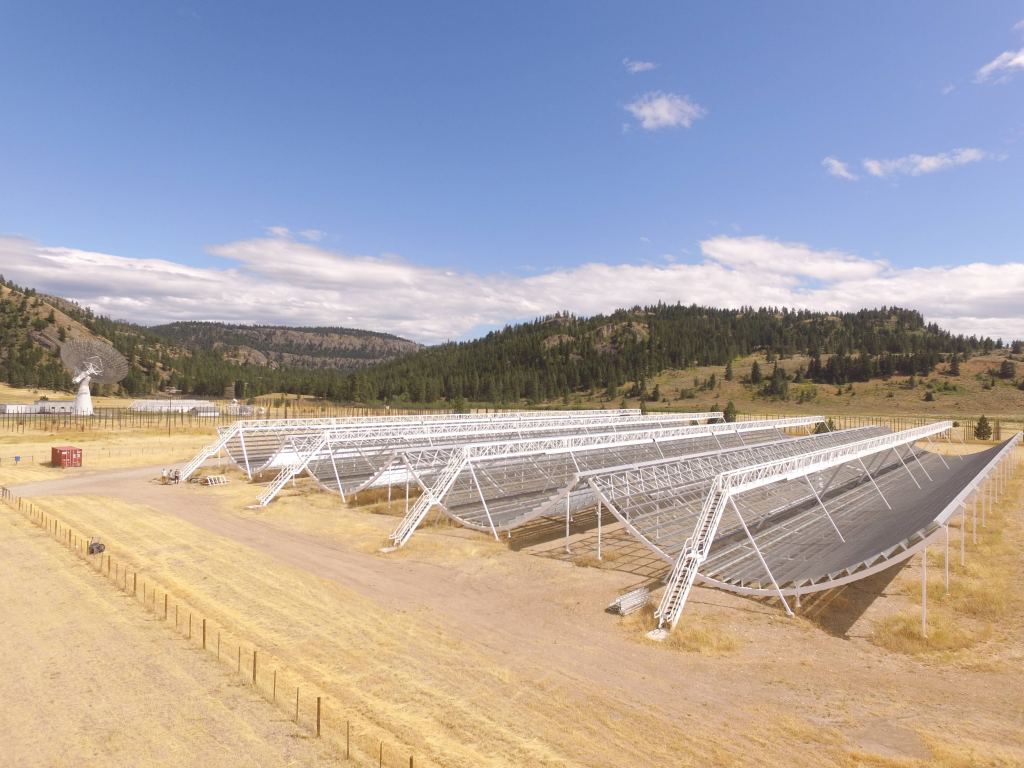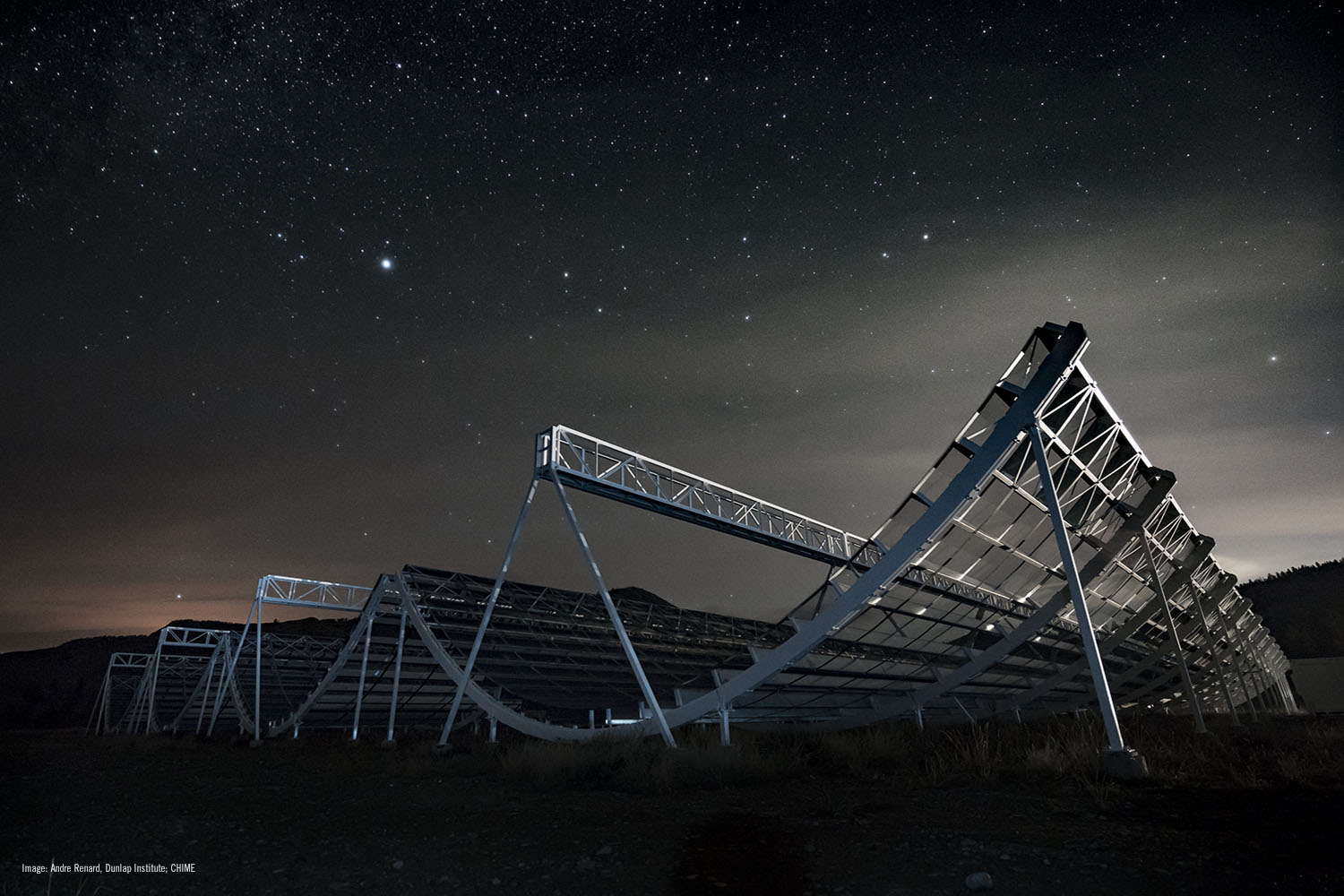Canadian scientists using the CHIME (Canadian Hydrogen Intensity Mapping Experiment) have detected 13 FRBs (Fast Radio Bursts), including the second-ever repeating one. And they think they’ll find even more.
CHIME is an innovative radio telescope in the Okanagan Valley region in British Columbia, Canada. It was completed in 2017, and its mission is to act as a kind of time machine. CHIME will help astronomers understand the shape, structure, and fate of the universe by measuring the composition of dark energy.
CHIME’s unique design also makes it well-suited for detecting fast radio bursts.
Fast radio bursts are high-energy events out in space that we detect as a transient pulse of radio waves. They usually only last a few milliseconds. Scientists aren’t sure exactly what their origin is, though it is definitely from outside the Milky Way. Some of the suggested sources are black holes or rapidly-rotating neutron stars.
Tom Landecker, CHIME Team Member, National Research Council
“We haven’t solved the problem, but it’s several more pieces in the puzzle.”
“Until now, there was only one known repeating FRB. Knowing that there is another suggests that there could be more out there. And with more repeaters and more sources available for study, we may be able to understand these cosmic puzzles—where they’re from and what causes them,” said Ingrid Stairs, a member of the CHIME team and an astrophysicist at UBC.

The CHIME observatory has a unique design. Unlike other telescopes, which have moving mounts that allows them to reposition and to study specific objects in space, CHIME is statonary. CHIME sits still while the sky moves overhead. It maps the entire northern hemisphere every day, which means it will likely detect more of these phenomena.
CHIME is made of 1024 adapted cell-phone receivers in four 100 meter semi-cylinders, or “half-pipes”, all working together as one large interferometer. They’re connected to a supercomputer that processes all the data.
Stairs thinks that CHIME will find more repeating FRBs. Once they’re found, other telescopes can examine where they originated from for clues to their nature.
“With CHIME mapping the entire northern hemisphere every day, we’re bound to find more repeaters over time,” said Stairs. “Knowing where they are will enable scientists to point their telescopes at them, creating an opportunity to study these mysterious signals in detail.”

The origin of fast radio bursts is still not known. While some scientists suggest they’re caused by cataclysmic events, the discovery of repeating FRBs seems to eliminate that idea.
“We’re very excited to see what CHIME can do when it’s running at full capacity.”
Deborah Good, PhD student at UBC, member of CHIME’s FRB team.
FRB’s rarity makes them difficult to study. They also are very transient, lasting only a few milliseconds. What’s exciting about this discovery is that CHIME isn’t even operating at full capacity yet. Once it’s up to speed, it will discover many more, maybe each day of operation, and the data flood gates will open on these intriguing phenomena.
“We’re very excited to see what CHIME can do when it’s running at full capacity,” said Deborah Good, a PhD student in physics and astronomy at UBC who is part of CHIME’s FRB team. “At the end of a year we may have found 1,000 more bursts. Our data will break open some of the mysteries of FRBs.”
The first FRB was detected in 2007 by scientists looking through pulsar data. Most fast radio bursts last a brief instant and then they’re gone, although with this latest CHIME discovery, we now know of two that have repeated. The first repeating FRB, called FRB 121102 was detected in 2012, and its source was extragalactic, in the direction of the Auriga constellation.
What the Wavelengths Tell Us About Fast Radio Bursts
The wavelength of the FRB can help scientists understand where they came from, and what kind of matter they passed through to reach us. But longer wavelength FRBs tells them more.
Deborah Good, UBC/CHIME
“The environment of the FRB has a much larger effect on the shape of the signals at long wavelengths.”
While most previous fast radio bursts have been detected at wavelengths of only a few centimeters, this latest batch had wavelengths of a few meters. This is a bonus to the CHIME team, who say that the longer wavelengths open up new lines of inquiry.
“The environment of the FRB has a much larger effect on the shape of the signals at long wavelengths,” said Good. “Seeing these bursts with CHIME will give us a good idea about what FRBs are like and where they come from, by showing us more about how their brightness changes at different frequencies and what’s happening to the signal on its way to Earth,” she added.
CHIME team member Tom Landecker, from the National Research Council, says these newly-detected fast radio bursts will help solve the puzzle, eventually, of where FRBs originate.
“[We now know] the sources can produce low-frequency radio waves and those low-frequency waves can escape their environment, and are not too scattered to be detected by the time they reach the Earth. That tells us something about the environments and the sources. We haven’t solved the problem, but it’s several more pieces in the puzzle,” he said.

Whenever there’s a discovery of fast radio bursts, or some other phenomenon of uncertain origins, the internet lights up with talk of aliens and extraterrestrial intelligences. We can’t seem to help ourselves. But in most of those cases, and most likely this one too, there’s a natural explanation. Scientists just haven’t found it yet.
But when they do find the source of FRB’s, CHIME may play a leading role in finding it.
CHIME was only in its commissioning phase when it detected these bursts. It wasn’t operating at full-capacity. Once it is, there will be interesting times ahead, especially if it can detect 1,000 more fast radio bursts, as Good suggests.
“The findings are just the beginning of CHIME’s discoveries,” added Stairs, the UBC astrophysicist. “In the next phase, we plan to capture the full high-resolution data stream from the brightest bursts, which will let us better understand their positions, characteristics and magnetic environments. The next few years will be very exciting.”
The detection of the fast radio bursts was presented at the winter meeting of the American Astronomical Society.
These new discoveries are also explained in two scientific papers, both published in Nature online on January 9, 2019. The first paper is titled “
Observations of fast radio bursts at frequencies down to 400 megahertz.” The second is “A second source of repeating fast radio bursts.”
Sources:
- Press Release: CHIME telescope detects second-ever repeating fast radio burst
- Press Release: New Canadian telescope will map largest volume of space ever surveyed
- CHIME Telescope Homepage
- Research Paper: A second source of repeating fast radio bursts
- Research Paper: Observations of fast radio bursts at frequencies down to 400 megahertz
- Wikipedia Entry: Fast Radio Burst

